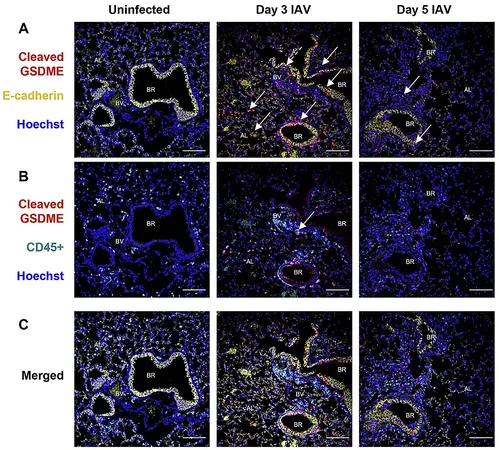
Unlocking the Secret to Flu Protection: The Key Protein That Could Save Lives!
2025-09-08
Author: Jia
Influenza, a virus that claims up to 650,000 lives worldwide each year, has long been a deadly enigma—until now. Recent groundbreaking research has unveiled a vital protein acting as a 'self-destruct button' within our lungs, which could revolutionize our approach to treating the flu.
The Lung Dilemma Unraveled
Conducted by a team at the forefront of respiratory disease research, led by Associate Professor Michelle Tate, this study sheds light on how severe influenza can lead to catastrophic lung damage. "Every year, thousands of vulnerable individuals, particularly those aged 65 and up or with compromised immune systems, face severe complications from flu," warns Tate.
A Path to Innovative Treatments
Tate's research, published in the journal Cell Death & Disease, raises hope for new medications that could dramatically reduce lung inflammation and damage, potentially speeding up recovery and cutting down the risk of mortality.
Meet Gasdermin E: The Culprit Behind Lung Damage
Together with Ph.D. student Sarah Rosli, Tate made a startling discovery: the protein Gasdermin E is instrumental in inflicting lung damage during influenza infections. "We found that when this protein is deleted, inflammation is significantly reduced and survival rates improve," Tate explains.
But how does it work? Gasdermin E triggers lung epithelial cells to burst, unleashing inflammatory signals that exacerbate tissue damage and worsen health outcomes.
Healthier Lungs, Less Severe Flu
The implications of these findings are immense. "By inhibiting Gasdermin E, we kept the lungs healthier, leading to milder flu symptoms. This breakthrough opens doors to creating treatments that enable the body to combat the flu more efficiently," Tate adds.
A Pioneering Study with Global Impact
This pioneering research not only identifies Gasdermin E as a key player in lung injury during flu but also emphasizes its role across various strains of the influenza virus. With rising resistance to current antiviral medications, these insights could pave the way for life-saving innovations in flu treatments.



 Brasil (PT)
Brasil (PT)
 Canada (EN)
Canada (EN)
 Chile (ES)
Chile (ES)
 Česko (CS)
Česko (CS)
 대한민국 (KO)
대한민국 (KO)
 España (ES)
España (ES)
 France (FR)
France (FR)
 Hong Kong (EN)
Hong Kong (EN)
 Italia (IT)
Italia (IT)
 日本 (JA)
日本 (JA)
 Magyarország (HU)
Magyarország (HU)
 Norge (NO)
Norge (NO)
 Polska (PL)
Polska (PL)
 Schweiz (DE)
Schweiz (DE)
 Singapore (EN)
Singapore (EN)
 Sverige (SV)
Sverige (SV)
 Suomi (FI)
Suomi (FI)
 Türkiye (TR)
Türkiye (TR)
 الإمارات العربية المتحدة (AR)
الإمارات العربية المتحدة (AR)